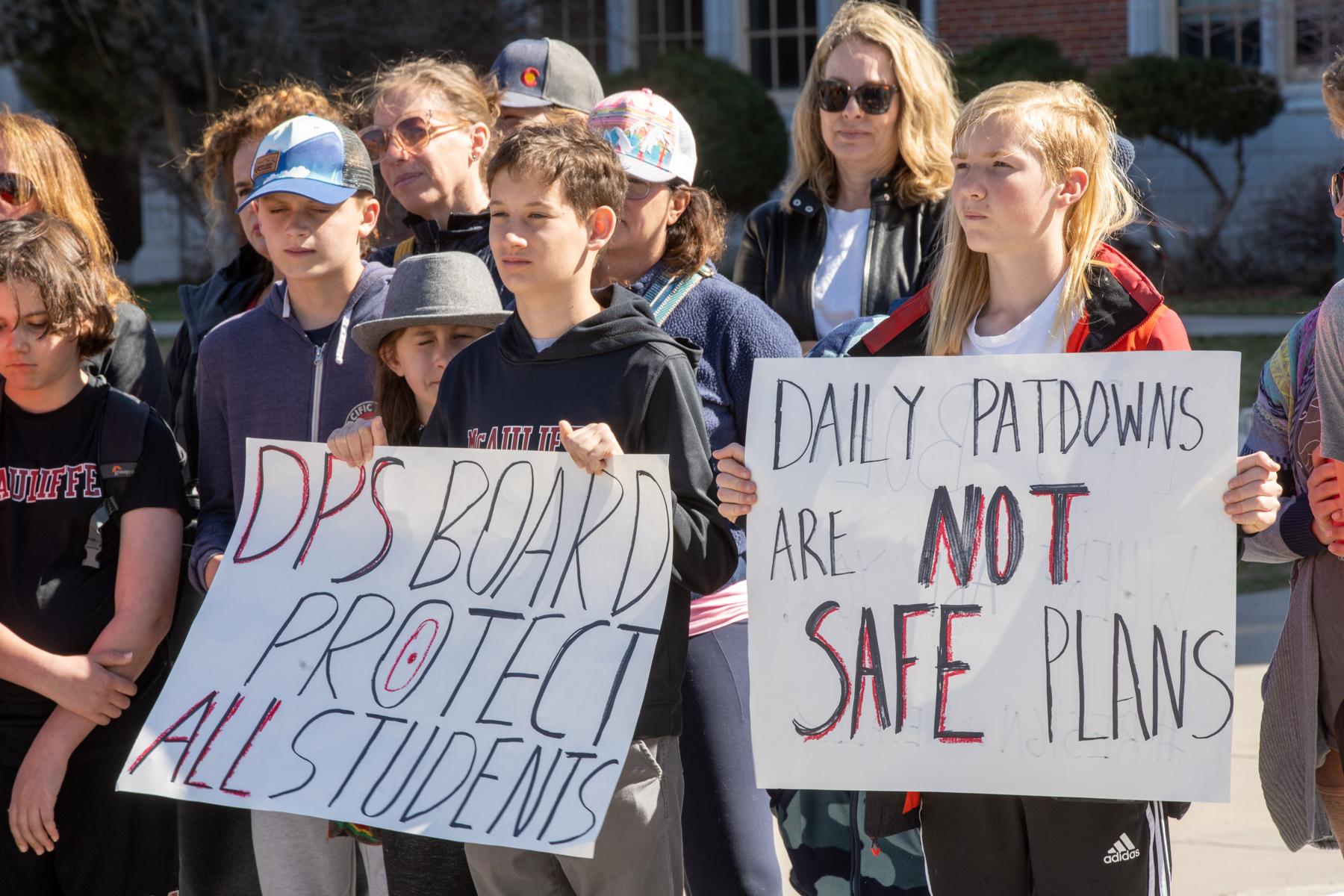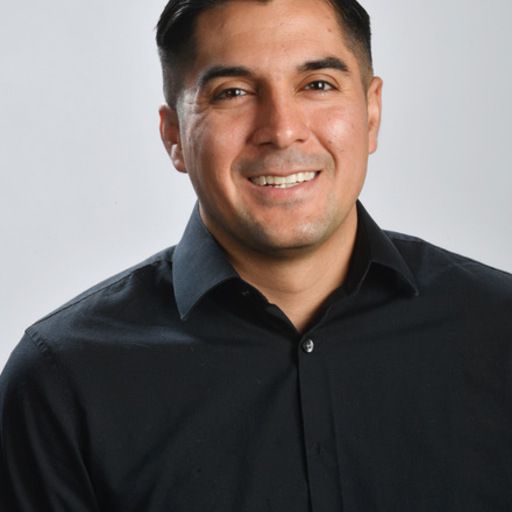
This story was originally published by Chalkbeat. Sign up for their newsletters at ckbe.at/newsletters
Denver middle and high schools would make the choice each year whether to have a police officer stationed on campus under a draft school safety plan released Monday.
School leaders would need to reevaluate the decision annually and be required to involve the school community. The 48-page school safety plan also emphasizes the district’s focus over the years on mental health, social support, and equity.
Denver Public Schools released the plan Monday afternoon. It summarizes many of the district’s practices in school safety while adding in recommendations. More details of recommended changes will be highlighted in a second draft, a district spokeswoman said.
The school board tasked Superintendent Alex Marrero with drafting a plan a day after a student shot two East High School deans in March.
The shooting happened while the deans were searching the student for weapons, a practice that happens daily in some district high schools. Linking to a slide presentation given to deans districtwide, the draft plan implies deans will continue to conduct student searches, though it says an unarmed campus safety officer or an armed DPS mobile patrol officer should be involved “when you are searching for a firearm or dangerous weapon.”
The plan also calls for the district to retrain all employees in emergency response procedures.
The student who shot the deans at East had previously been expelled from the neighboring Cherry Creek School District. The draft plan says that when a student transfers from another district, “the school team should be requesting prior school records as part of the enrollment process,” including “any prior safety protocols.”
The district also is in the process of reviewing the physical safety of entrances and the interior of buildings, the plan says.
Two other shootings have also occurred near Denver’s largest high school campus this year, including one that led to the death of a student. And schools across the district have also dealt with violence on campus or in the community.
Marrero drafted the plan after he said he consulted with experts. The district also surveyed about 7,700 students, staff, and parents about safety concerns. The top concerns across groups included students bringing weapons on campus and student-on-student violence.
Next, but ranked at varying levels of priority, were the mental and emotional well-being of students, outsiders entering school buildings, and community violence.
Each group ranked potential solutions to school safety differently. More than half of students said more mental health support was important to school safety, followed by discipline policies and police in schools.
School staff also rated mental health support very highly, but put discipline policies first. Just a third ranked police in schools among their top three. Almost half of parents ranked police officers first, followed closely by discipline policies and student mental health.
As with most Denver Public Schools surveys, white parents were overrepresented, and families of color were underrepresented. Survey results were weighted to account for this.
According to his plan, Marrero will seek community feedback on the first draft. In an email to parents, Marrero encouraged them to talk to their school principal or email him directly with feedback. Two town halls are scheduled for later this month and the district will also gather feedback through a survey. His administration will then release a second version by May 26 that will also be available for community feedback.
Marrero will release a final version on June 23 that will be reviewed by the school board.
The school board tasked Marrero with coming up with a plan after a five-hour closed-door meeting. At that same meeting, the board suspended its 2020 policy that phased out police officers in schools.
When students returned from spring break, the district added a school resource officer at 13 campuses, with East High School getting two officers.
DPS previously removed police from schools and made other changes to its discipline policies because Black and brown students were more likely to be arrested, ticketed, suspended, and expelled than their white peers.
More recently, Denver principals and parents have criticized the district for allowing students accused of serious crimes to remain in the classroom. District officials have defended their approach.
Parents also have called for the school board and Marrero to be more transparent about safety decisions and communicate more with parents. Some parents also have called for the entire board to resign.
East High School parents have held weekly meetings calling for an end to the violence and for the district to do more. They’ve called on the board to work with families to make the district safer.
During Monday’s meeting of the East High School parents safety group, parent Steve Katsaros said he wants to see Denver schools commit to transparency and engagement of community and families. The plan was released during the group’s weekly meeting and he said he wasn’t able to review the plan.
But he said parents want transparency. He said he wants the district to detail whether the emailed survey reached parents as intended and how many families opened the email.
Short-term, he said he does not have confidence in the district or board. The city and community, however, will get this right in the long term, he said.
“Right now we are dealing with the same people that put us in this position,” Katsaros said. “We need to move fast so we have to work with the folks that we have, and we will see where we get.”
Much of the plan is a recitation of things the district already does or policies it already has in place.
Examples include expecting schools to have the equivalent of one full-time mental health worker on staff, screening all students for emotional and behavioral concerns, and doing more in-depth reviews when a student is flagged for potentially hurting themselves or others. It highlights 20-minute daily lessons on social and emotional learning that happen in elementary schools.
The draft plan also talks about DPS’s existing summer school programs, its commitment to a curriculum that teaches Black, Indigenous, and Hispanic history, and its bullying prevention efforts.
It also includes a chart that shows the types of safety personnel in schools, including armed city police officers at some high schools, an armed DPS patrol unit that’s mobile and responds to calls that don’t require police, and unarmed security guards stationed inside schools.
Parents and others have questioned why students who are being searched daily for weapons are allowed to attend in-person school. The draft plan says, “as a district we strongly believe in-person learning is the best option for students because it allows us to support students developing resiliency, visions for their futures, and the skills needed to achieve their dreams,” which it calls “key components of youth violence prevention efforts.”
But the plan also says DPS is planning to expand its online school “based on an increase in demand.” The district’s online school, Denver Online, serves grades six through 12.
The report also highlights plans the school district has been working on with the city, including developing a pipeline of culturally responsive providers who can fill vacancies for school psychologists, social workers, and other mental health providers. The district would do that by recruiting current students to become entry-level restorative practices coordinators, recruiting paraprofessionals to become deans of culture, and recruiting deans to become psychologists and social workers.
Participants in the program would get tuition stipends and “access to educational opportunities” that would allow them to earn the proper certifications to move up while working full-time.
The district has done a version of this program that recruits paraprofessionals to become classroom teachers.
The district also is working with the city on “dissolving outdated policies that inadvertently perpetuate youth violence,” the draft plan says. That includes reviewing all of its policies related to youth violence prevention to make sure they’re working as intended — and to discontinue policies that are not.
The plan proposes developing more alternatives to citation and connecting students who commit offenses with supportive services more quickly.
The district also says it hopes to work with the city to develop a “central database powered by the latest technology” that will allow information sharing between schools, city agencies, and nonprofit organizations. The goal, the draft plan says, is “to support youth and ensure follow-up on referrals so no youth is left without the vital services they need.”
Read the full plan and see opportunities to provide feedback.
Jason Gonzales is a reporter covering higher education and the Colorado legislature. Chalkbeat Colorado partners with Open Campus on higher education coverage. Contact Jason at [email protected].
Chalkbeat is a nonprofit news site covering educational change in public schools.








